2100 - 極端乾旱是影響近地球的1-第三 | 人類的智慧是被大大大赦國際擴增 | 游牧浮動城市是漫遊的海洋 | 超級,颱風威力已增加了十倍 | 地球上的海洋的化學已被徹底改變 | 帝企鵝面臨滅絕
2 110 - 火星terraforming的是正在進行 力場在軍事用途 | Femtoengineering是實際 | | 我們的太陽系地震和海嘯的人為控制 是通過百萬度的氣體雲
2120 - 心靈上傳進入主流社會 | 國際太空電梯業務
2130 - 月球的大型民用結算正在進行
2140 - 一個北美聯盟正在形成 | 大型靜止物體隱形傳輸是可能的
< 2100至49年 | 2150至2199年 >
2100
極度乾旱的影響,地球的近三分之一在21世紀全球平均氣溫上升超過6°C。正反饋迴路觸發西伯利亞永久凍土融化,釋放大量的甲烷之交-溫室氣體比二氧化碳強20倍以上。在眾多的環境影響,一直是在乾旱的大幅增加。*
• 中度乾旱,影響了在2010年的地球表面的25%,現在影響到50%。
嚴重的乾旱,影響了在2010年的地球表面的8%,現在影響高達40%。
• 極端乾旱,影響了在2010年的地球表面的3%,現在影響高達30%。
日益惡化的環境狀況已導致大量人口死亡,死亡十億美元,在過去的幾十年。* * 整個地區現在躺在放棄-與農業不可能的,曾經顯赫一時的河流乾涸,巨大的野火席捲大領域。
海水淡化技術已經救出一些國家,但它在許多人已經不能滿足需求。努力扭轉在全球範圍內的氣候變化,使用不同的地質工程技術,被證明是不夠的。
人類的智慧被大大擴增人工智能的一些地區-如加拿大,北歐和俄羅斯-已經持續增長和繁榮。在這些國家的大型自動化帶領廣大人類員工大片被虛擬或機器人同行取代。AI系統,現在幾乎佔據了企業,政府,軍隊,製造業和服務行業的各個層面。
AI程序,而不是獨立的實體,這些往往是人類頭腦合併,大大擴展了後者的能力。例如,對任何問題的知識和技能,現在可以下載和直接存儲在大腦中。除了基本的信息和數據,這包括了一系列的體能。例如,一個人可以學習自衛,成為一個在任何體育項目的專家或教授到一個新的車輛,所有操作在幾秒鐘內。
世界正在改變這種人與機器的融合。表示,它已成為在同一時間,主僕人類的AI大大更大的權力。
此人AI合併的好處,需要植入物的廣泛使用,但是-這是顯著少數民族的人口仍然拒絕接受。這些非升格人類相比到transhumans,正在成為像山頂洞人-千百年來落後於智力的發展。* 無法理解他們周圍的最新技術,世界上出現的“快速”和“怪”,從他們的角度越來 越有限。* 這是建立在社會中的主要部門。

信用:Indiansummer
游牧浮動城市是漫遊的海洋在22世紀來臨之際,許多世界城市的謊言部分淹沒由於海平面上升。* 儘管一些嘗試建立洪水防禦,甚至著名的地方-如新的紐約,倫敦,香港香港,上海和悉尼-都受到了影響。
與超過10%的世界人口居住在海岸線,數億人已被迫遷移。然而,內陸的食品和淡水供應中斷 - 因乾旱造成的疾病,戰爭,人口過剩和其他因素 - 意味著他們的行程,最後往往是徒勞的。受災最嚴重的一些國家已經陷入了無政府狀態。廣大不適宜居住的荒地,現在覆蓋赤道地區,絕望移動從城市到城市的難民流,什麼小碎片仍戰鬥。有廣泛的破壞,建築物和基礎設施。
在美國,以 前在南方產糧繁榮已變成死氣沉沉的沙漠,而沿海地區經常受到風暴潮,6類颶風和其他反常天氣事件重創。*
與此同時,曾經顯赫一時的亞馬遜雨林已減少綠地1炎熱的灌木和幹河床包圍的綠洲。
越來越多的公民完全放棄自己的家園,企圖達到緯度偏北或偏南。然而,邊界正變得越來越難以跨越。有限的糧食,資源和房屋,迫使許多國家的政府,大幅度重新考慮他們的移民政策。
豐富的企業家正在利用這一點,提供生活摒棄了新的手段,完全符合國家邊界。這是在浮動,人工島嶼的形式-完全自給自足,能夠無限期地游弋在世界各地的*
船舶提供了很多,他們的居住者從來沒有經歷過的舒適性,安全性和安全性。除了食品,淡水和能源的持續供應,設施 - 包括國家的最先進的虛擬現實套房,機器人公務員/同伴,工業規模的納米技術裝配,反重力車輛的焊盤,游泳池和其他設施。精心維護樹木園,具有真正的樹木,也可以在船上發現(菌群越來越罕見的,這些天)。
尤其受歡迎,在東南亞,已受到氣候變化的影響,最難的,這些巨大的兩棲艦艇。一些超過一公里,直徑數万居民最大的工藝措施。這些的“micronations”的生活和可持續的方式為人類與自然的相互尊重的基礎上,全新的文化正在形成。*
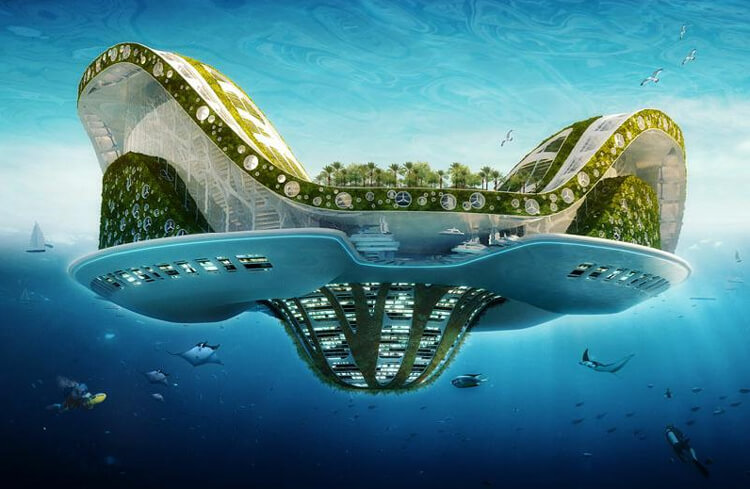
信用:文森特百樂嘉利寶建築師
超級颱風,10倍增加Super typhoons have increased ten-fold
。The annual number of strong typhoons - whose winds exceed 194 kph (120 mph) - has increased tenfold, due to the continuing trend of global warming. Typhoons similar in strength to the 1959 Typhoon Vera (which killed over 5,000 people and left 1.5 million homeless) are now striking Japan each and every year. * Many parts of East Asia have been long since abandoned due to these and other disasters.
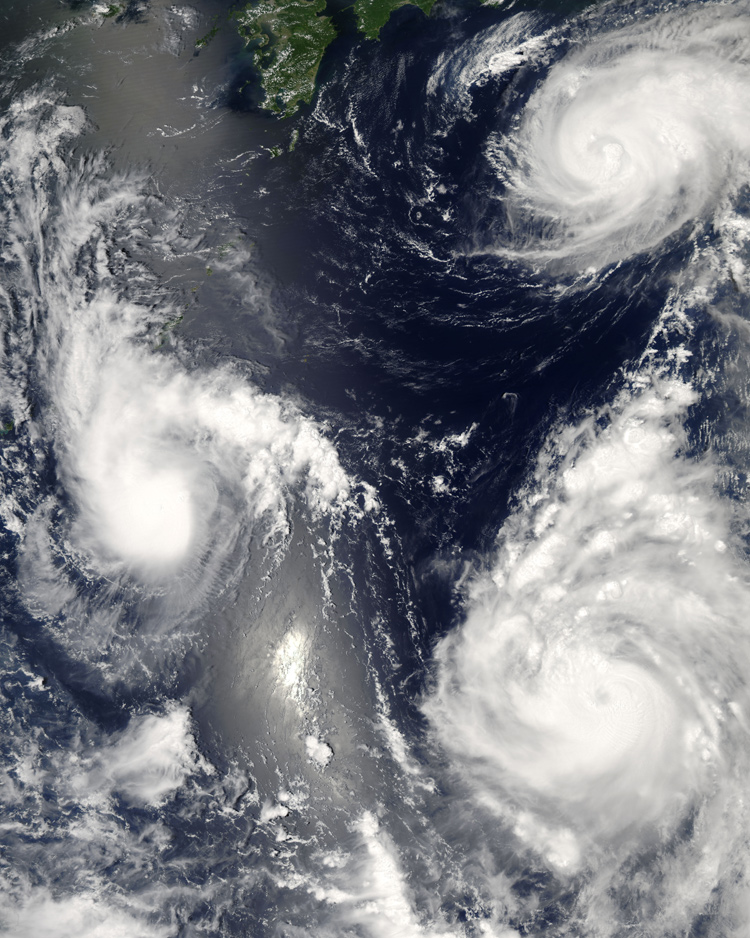
Credit: NASA
The chemistry of Earth's oceans has been radically alteredCO2 emissions in the 19th through 21st centuries lowered the pH level of the oceans by almost 0.5 compared to the natural level. This increased the acidity of seawater, drastically reducing the availability of calcium carbonate which many creatures needed to build shells and skeletons.** Entire regions are now devoid of life - unable to support plankton, molluscs or crustaceans. Food chains have collapsed, with many whales and other large species dying off.
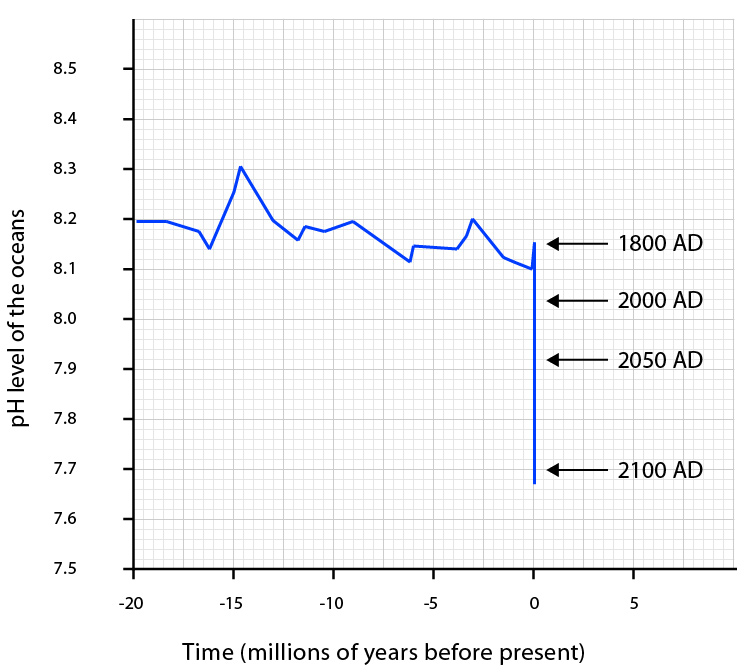
Emperor Penguins face extinctionFor centuries, Emperor Penguins were the best-loved and most recognised symbol of Antarctica. By the middle of this decade, their numbers have dwindled to almost nothing because of melting sea ice, depletion of krill and industrial activity.* Small populations continue to exist for several more years, by adapting their breeding habits, but even they will eventually disappear.
Emperor Penguins aren't the only birds vanishing during this time: thousands of other species are disappearing too, as many ecosystems around the world face permanent collapse.*
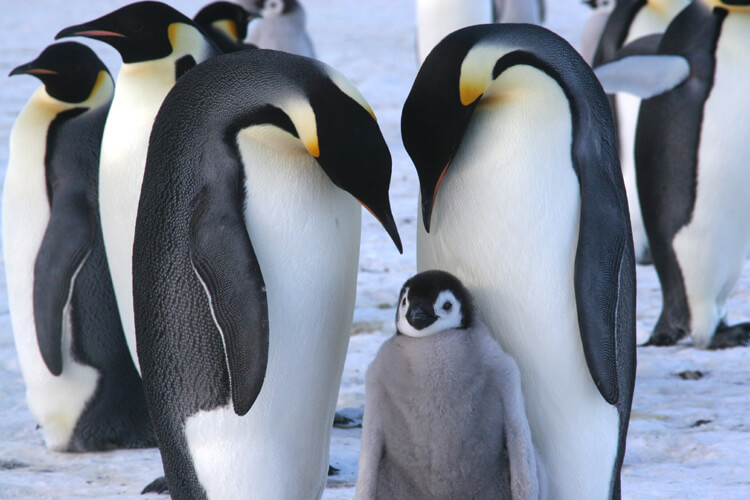
© Bernard Breton | Dreamstime.com
2110
Terraforming of Mars is underwayAlthough no physical processes have been introduced yet, the first serious plans are being drawn up for the planet's gradual transformation, with the ultimate goal of making it habitable for humans. Exactly who will be given control of Mars and its resources - or if the planet should have complete independence - is the subject of much debate and speculation around this time.
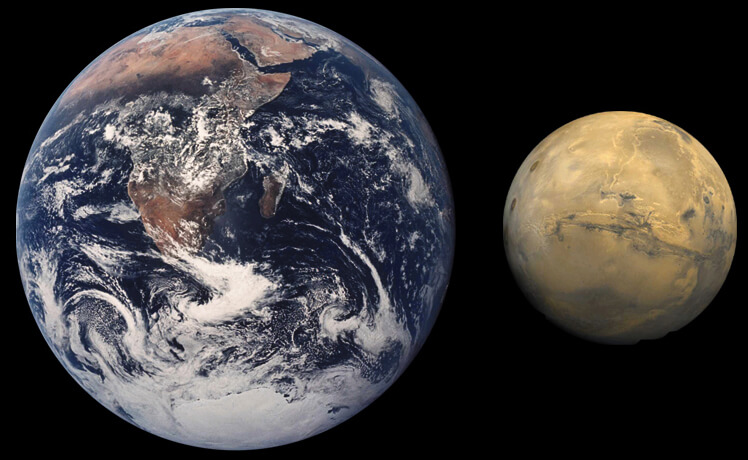
Credit: NASA
Force fields are in military useA combination of several unique technologies - stacked together in layers - has led to a radical new form of protective shielding.* To observers from the previous century, this would resemble the "force fields" depicted in science fiction movies. When activated, it provides an instant, near-impenetrable field withstanding hits from all but the most powerful weaponry.
The outer layer consists of a supercharged plasma window, shaped into a dome or sphere by electromagnetic fields. This is hot enough to vaporize most incoming metals.
A secondary layer underneath contains millions of curved laser beams, producing a high-energy web that captures projectiles fast or powerful enough to bypass the plasma window.
A third layer consists of a "lattice" made from trillions of carbon nanotubes. These microscopic structures are woven together in an instant, forming a diamond-hard shell repelling objects missed by the other two layers. If necessary, it can be extended to cover a larger perimeter, at the cost of decreased strength. Conversely, it can be reduced in size to provide an even denser and more durable barrier.
The layers described above can protect against the majority of bullets, bombs and projectiles. However, they are almost useless against lasers. A fourth and final layer takes care of this problem. It uses photochromatic particles, which change their properties when exposed to laser light, effectively neutralising most directed-energy weapons. An early form of this technology was seen a century previously, with sunglasses that changed colour when exposed to sunlight.
In addition to warzones, these multilayered force fields are being used in various other situations. National borders, for example, are being made more secure - as are many sources of food and water production. Corporate spaces and luxury dwellings owned by the rich are also utilising them. A number of satellites are being fitted with this technology too.
Femtoengineering is practicalTechnology on the scale of quadrillionths of a metre (10-15) is becoming possible around this time.* This is three orders of magnitude smaller than picotechnology and six orders of magnitude smaller than nanotechnology.
Engineering at this scale involves working directly with the finest known structures of matter - such as quarks and strings - to manipulate the properties of atoms. This development is a further step towards macro-scale teleportation, i.e. transportation of objects visible to the naked eye. Significant breakthroughs in anti-gravity and force field generation will also result from this.
Another area that will see major progress is in materials technology. For example, metals will be produced which are capable of withstanding truly enormous pressures and tensile forces. The applications for this will be endless, but perhaps one of the most exciting areas will be in the exploration of hostile environments - such as probes capable of travelling within the Sun itself, and tunnelling machines that can penetrate the Earth's crust into the layers of magma beneath. Longer term, this development will pave the way for interstellar ships and the massive forces involved in lightspeed travel.
Other more exotic materials are becoming possible - including wholly transparent metals, highly luminous metals, frictionless surfaces, and ultradense but extremely lightweight structures.
As with many areas of science, femtoengineering is being guided by advanced AI, which is now trillions of trillions of times more powerful than unaided human intelligence.

© Antony Papantoniou | Dreamstime.com
Man-made control of earthquakes and tsunamisBy now, geophysicists have mapped the entirety of the Earth's crust and its faults, extending some 50 km (30 mi) below the surface. Computer simulations can forecast exactly when and where an earthquake will occur and its precise magnitude. With a "scheduling" system now in place, comprehensive preventative measures can be taken against these disasters.
For instance, people know when to stay out of the weakest buildings, away from the bridges most likely to collapse and otherwise away from anything that might harm them. Rescue and repair workers can be on duty, with vacations cancelled and extra workers brought in from other areas. Workers can be geared up with extra equipment ordered in advance to fix key structures that may fail in an earthquake. Freeways can be emptied. Dangerous chemical freight can be prevented from passing through populated areas during the quake. Aircraft can be stopped from approaching a potentially damaged runway. Weak water reservoirs can have their water levels lowered in advance. Tourists can be made to stay away. All of these measures can substantially reduce casualties and economic disruption.
However, some nations are going one step further and creating additional systems, in the form of gigantic engineering projects. To protect the most earthquake-prone regions, a network of "lubrication wells" is being established. These man-made channels penetrate deep underground, to the very edge of the mantle. They work by injecting nanotechnology-based fluid or gel into fault lines, making it easier for rock layers to slide past each other. Explosive charges can also be dropped at strategic points, in zones where the lubrication might be less effective. Instead of sudden, huge earthquakes, the network induces a series of much smaller earthquakes. Using this method, an earthquake of magnitude 8.0 can be buffered down to magnitude 4.0 or lower, causing little or no damage to structures on the surface. In coastal locations, tsunamis can also be prevented.
This is a carefully controlled process - requiring heavy use of AI - and is by no means perfect. There are complex legal and liability issues in the event of accidents. For instance, damage from human-induced earthquakes cannot be excused as an "act of God."
Despite these technical and legal hurdles, it would seem that mankind is gaining the power to control even the most destructive aspects of nature.*
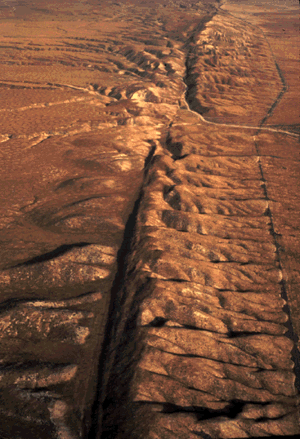
Our solar system is passing through a million degree cloud of gasThe Sun is approaching a boundary between the Local Cloud of interstellar gas and another cloud of extremely turbulent gas - the latter is the remnants of supernova explosions that occurred millions of years ago.
The density of this medium is sufficiently low to pose no threat to Earth or any other planets. The heliosphere is reformed slightly, and the level of cosmic radiation entering the magnetosphere increases, but nothing more.
However, spacecraft and satellites may be damaged by these high energy particles unless they are upgraded.*
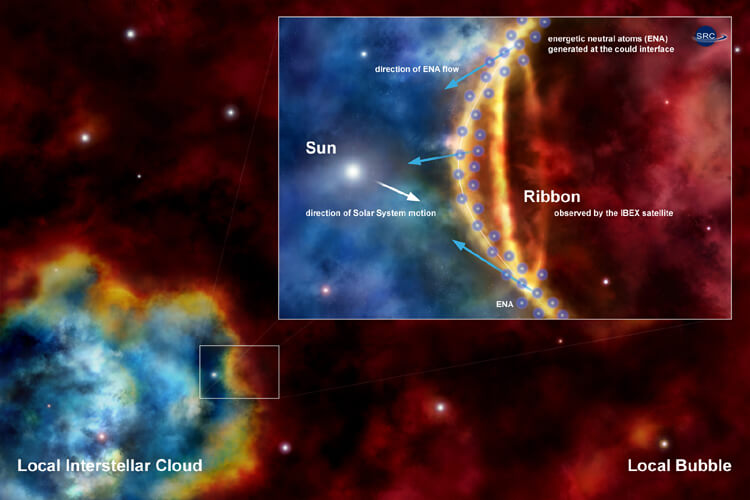
Credit: SRC/Tentaris,ACh/Maciej Frolow
2120
Mind uploading enters mainstream societyAdequate hardware to support human-level intelligence was available as far back as the 2020s, thanks to the exponential progress of Moore's Law.* This made it possible to form simulations of neural processes.
However, the underlying software foundation required for mind uploading proved to be a vastly greater challenge. Full transfer of human consciousness into artificial substrates posed enormous technical difficulties, in addition to raising ethical and philosophical issues.
The sheer complexity of the brain, and its inherent fragility - along with the many legislative barriers that stood in the way - meant that it was nearly a century before such technology reached the mainstream.
Some breakthroughs occurred in the latter decades of the 21st century, with partial transfer of memories and thought patterns, allowing some limited experience of the mind uploading process. However, it was only through the emergence of picotechnology and strong AI that sufficiently detailed scanning methods became available. This new generation of machines, being orders of magnitude faster and more robust, finally bridged the gap between organic human brains and their synthetic equivalents.
Initially tested on monkeys, the procedure was eventually offered to certain marginalised people including death row inmates and terminally ill patients. Once it could be demonstrated as being safe and reversible, the project garnered a steady stream of free and healthy volunteers, tempted by this new form of computerised immortality.
Years of red tape and legislation followed, including some of the strictest regulations ever enacted into law. Religious and conservative groups voiced their objections to what they saw as a fundamental violation of God's will. At times, this threatened to postpone the technology indefinitely. Eventually though, like so many other breakthroughs in science, the zeitgeist moved on. The level of demand for mind uploading proved to be enormous, and the treatment was made commercially available in the 2120s.
Today, citizens have access to special clinics in which their biological brains can be literally discarded in favour of artificial ones. Rather than simply "duplicating" a mind, the machine physically shifts the consciousness, like a sponge soaking up water. The brain is gradually replaced - piece by piece - so the original personality remains intact during the transition. This vital aspect of the procedure assuages the fear which many have of losing their identity.
For the wealthiest individuals, entire new bodies can be grown, into which the synthetic brains can be transplanted. These bodies may themselves be artificial, with options for partially cyborg or fully robotic replacements. Externally, they are often indistinguishable from real human bodies, but include many hi-tech add-ons and internal features boosting physical and mental abilities.
Not everyone is opting for these types of treatments, however. A significant percentage view them with extreme suspicion, as though somehow immoral and dehumanising. With each passing year, society is becoming increasingly fractured, with an ever-widening divide between those who seek to enhance themselves, and those who prefer to eschew such technology.
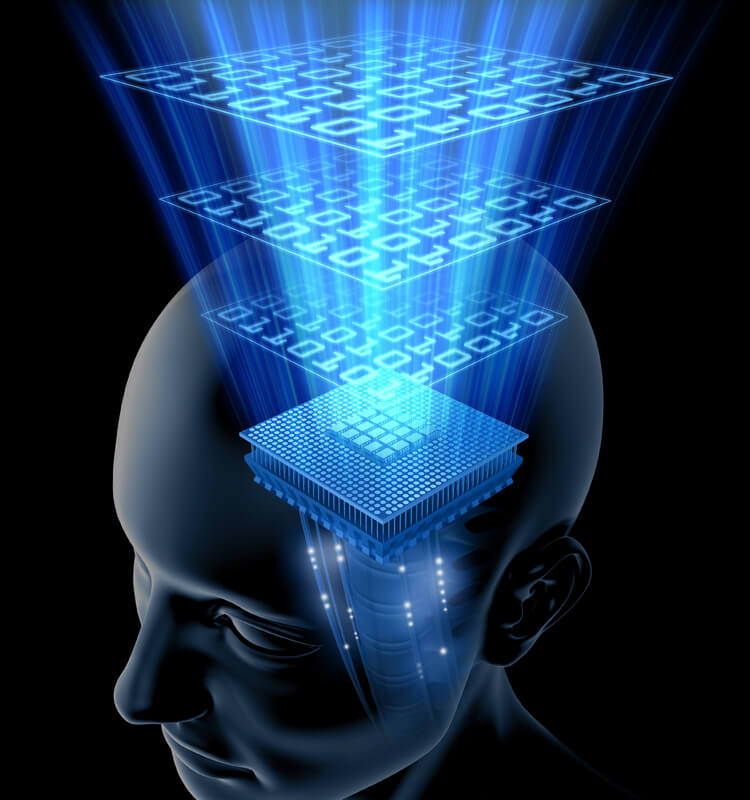
© Kts | Dreamstime.com
The International Space Elevator is operationalRising from the Pacific Rim, this mega-structure is thousands of miles high. Decades in the making, it has been built entirely from carbon nanotubes. These are hundreds of times stronger than ordinary steel and capable of withstanding the enormous tensile forces involved. The elevator is controlled largely by AI, which monitors any stresses or unusual conditions.
One major obstacle to the project's completion - aside from the initial outlay - was the need for international agreements on safety, security and insurance in the event of an accident. Although the technology was available as far back as 2040, these issues (and others) delayed construction by many years.
A major space boom is now finally underway, as passengers can be delivered to orbit at vastly reduced costs, compared with traditional rocket launches.*
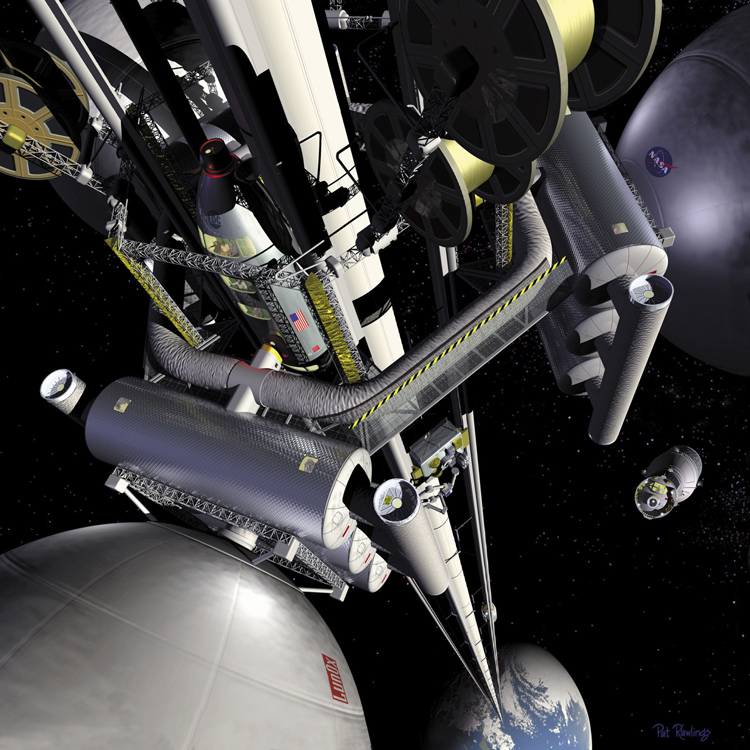
Credit: NASA
2130
Large-scale civilian settlement of the Moon is underwayAs a result of the International Space Elevator, huge numbers of Earth's citizens now have rapid, affordable and safe access to space. Dozens of permanent Moon colonies are now being established, funded by various cooperative groups. Nanotechnology self-assemblers enable these habitats to be constructed in hours or days.*Most are concentrated in the southern polar region, which has greater access to water.*
Advances in genetic engineering mean that humans can be fully adapted to the gravity of the Moon. In any case, scientists are developing a form of artificial gravity that will soon become available.
In addition to basic exploration and surveying, the main occupations for colonists at the moment are scientific and technological research, mining, agriculture, energy production, communications and transport/infrastructure management. Many tasks are handled by robots, giving more leisure time for the human residents.
Tourism is now a booming industry, with many thousands of people arriving on the Moon's surface each year for guided tours - even though VR simulations can recreate the Moon's environment. The most popular destinations are Mons Huygens (the highest mountain), Tycho (a prominent crater visible from Earth) and the Apollo landing sites.
A very large telescope is also operational, for long-distance astronomical observations. The lack of atmosphere and other conditions gives it a tremendous advantage over Earth-based telescopes.*
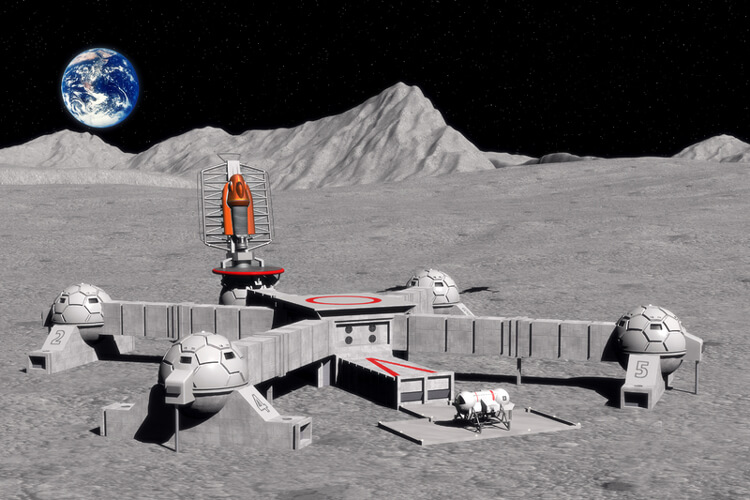
© Luca Oleastri | Dreamstime.com
2140
A North American Union is taking shapeThe 21st century witnessed a dramatic rebalancing of America's power, much of it shifting to China and India. However, there were also developments closer to home, with a remodeling of the relationship to her neighbours.
A gradual stagnation of the white population, and simultaneous growth of Hispanics, offered the first hints of what lay ahead. This trend would continue long into the future, with Latin American immigrants eventually dominating the southwestern states. By the late 21st century, territory had been ceded to Mexico - which had itself become a fully developed, industrialised nation.*
Alongside this, Canada began to experience a population and economic surge almost unparalleled in its history. Soaring global temperatures were providing access to a treasure trove of natural resources, previously locked up in the frozen north - even as the US was being ravaged by drought, flooding, wildfires and other adverse conditions. With Canada's environment now vastly more favourable, newcomers flocked in their millions to its cheap, wide, green lands.*
After decades of further homogenisation and cultural interchange between each of the three nations, US power has continued to wane, both at home and abroad. Meanwhile, national borders are becoming increasingly irrelevant in the world at large. Ongoing globalisation, the birth of a single world currency, the dominance of artificial intelligence in government, a defection of citizens to online "virtual states", and other technological advances have contributed to this. Europe has already formed its own superstate, while parts of Asia are now converging too.
In light of all this, the USA begins talks with Canada regarding a North American Union. With a more globalised, supranational sentiment emerging, they are gradually unified under a single political system - strengthening the power and influence of both.
Mexico eventually joins too. In later decades, further expansion of the union occurs with even Cuba, the Dominican Republic and other parts of the Caribbean seeing integration. By the end of the 22nd century, the whole of North and South America has joined to become the "American Union", paving the way for a truly united world government in the 23rd century.
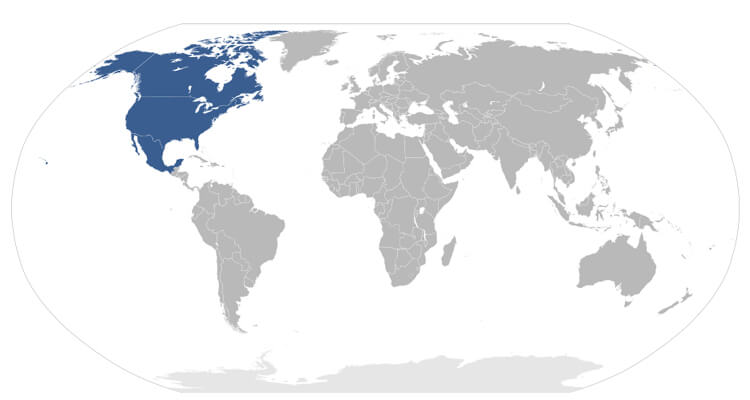
Credit: El_bart089
Teleportation of large stationary objects is possibleTeleportation of stationary objects around one to two metres in size is now possible. It will be many years before living, breathing subjects can be teleported, however. At present, use of this technology is strictly limited to:
- scientific experiments
- highly classified government activities
- military operations
- surface-to-orbit transportation of equipment
- emergency situations requiring a rapid response
The maximum possible range of teleporters at this stage is limited to a few hundred miles.
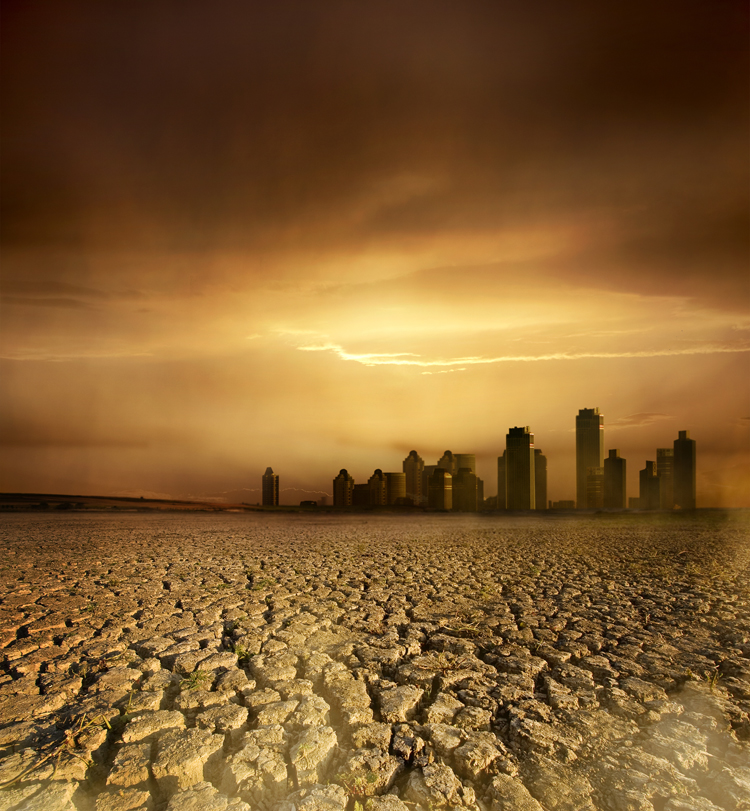
沒有留言:
張貼留言